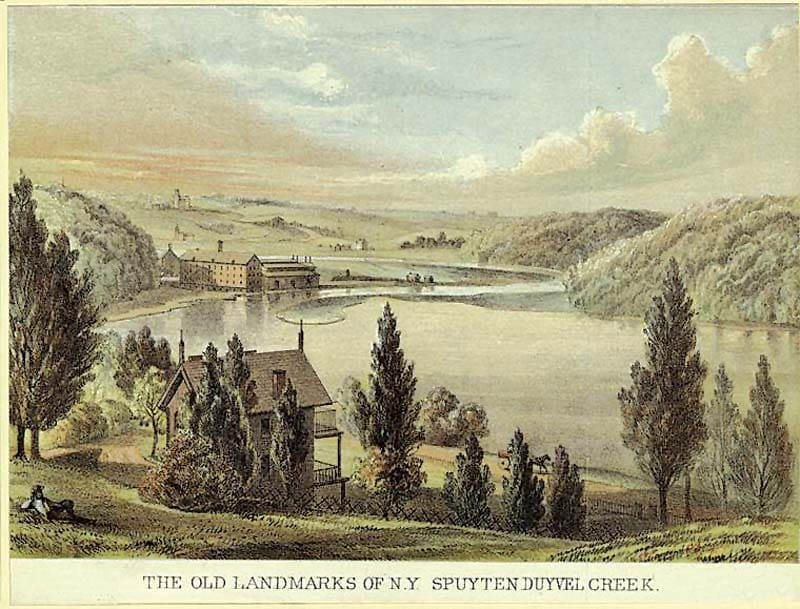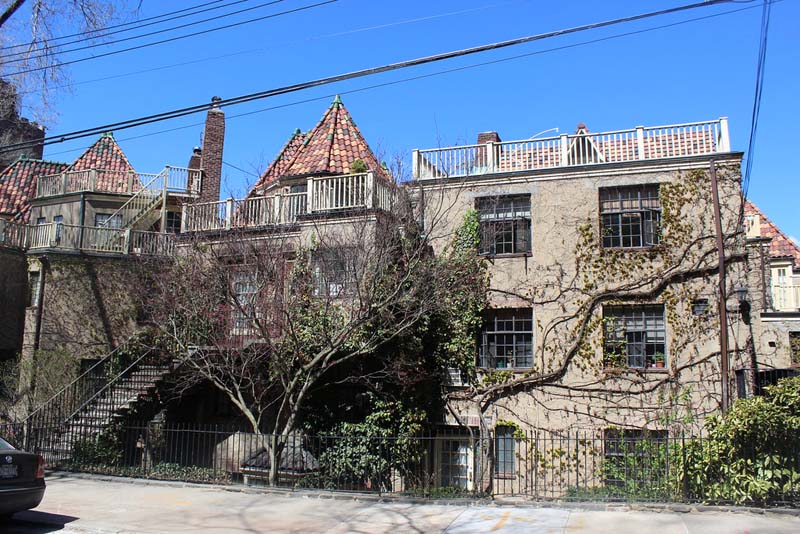 “Reinvention, newness was all, all built on the sturdy back of what was past,” wrote Anna Quindlen in her fictional ode to New York, Alternate Side. “Somewhere a metal shard hammered by a Dutch worker centuries before oxidized in the ground beneath layers of street and road.”
“Reinvention, newness was all, all built on the sturdy back of what was past,” wrote Anna Quindlen in her fictional ode to New York, Alternate Side. “Somewhere a metal shard hammered by a Dutch worker centuries before oxidized in the ground beneath layers of street and road.”
The dead, as the man said, will always be with us. In New York, the Dutch will be with us, from Martin Van Buren to the Van Wyck Expressway to the origins of Brooklyn and The Bronx. This is especially so at a quiet little corner of The Bronx, Spuyten Duyvil. The name is Dutch. It has several translations: Spouting Devil, Spewing Devil, Spinning Devil or Devil’s Whirlpool. But whatever the name, Spuyten Duyvil is a neighborhood with low crime and easy transportation routes all within a bucolic setting in the borough of Yankee Stadium and The Bronx Zoo.
Either way, the name made its debut in a story published in 1809 in Washington Irving’s A Knickerbocker History of New York. Irving, a legendary novelist and storyteller, immortalized one Anthony Van Corlaer, who in 1642, was summoned by the Dutch colonial governor Peter Stuyvesant to warn his fellow Dutchmen of an impending British invasion of Dutch holdings in New York. Van Corlaer, a predecessor to Paul Revere, sprang in action, swimming across the Hudson River into New Jersey to announce his version of “the British are coming!” According to the colorful Irving, an eyewitness claimed that the devil in the form of a giant fish seized Van Corlaer and dragged him under to a premature death by drowning.
 Irving was a master of the tall tale. A historian from the Kingsbridge Library, citing John McNamara’s Old Bronx, adds that the name came from a 1647 reference to a “gushing fountain of fresh water” poured into a creek. The Dutch called the creek “Spuit den Duyvil,” which evolved into the current name.
Irving was a master of the tall tale. A historian from the Kingsbridge Library, citing John McNamara’s Old Bronx, adds that the name came from a 1647 reference to a “gushing fountain of fresh water” poured into a creek. The Dutch called the creek “Spuit den Duyvil,” which evolved into the current name.
A neighborhood was born. In the late 19th century, a New York Central and Hudson River Railroad line passed through the north Bronx, allowing the neighborhood to become a bedroom community to Manhattan. On the heels of that, came residential construction. In the 1920s, The Bronx, like the rest of New York, began to boom. The key moment in the borough’s history was the construction of Yankee Stadium in 1923. The borough experienced a population upsurge, from 732,016 people in 1920 to 1,265,258 in 1930 and 1,394,711 in 1940. In Spuyten Duyvil, one-family housing units were built, contributing to the rustic nature of the neighborhood. In the 1950s, high-rise apartments and condominiums were constructed. As The Bronx suffered a rapid decline in the 1960s and ‘70s, the neighborhood began attracting middle-class families, drawn by the low crime rate, but also by good schools and the proximity to such neighborhoods as Fieldston and Riverdale. Today, 30,161 people call Spuyten Duyvil home.
In addition to pleasing architecture, the neighborhood boasts many fine churches and parks, including Edgehill Church of Spuyten Duyvil (United Church of Christ), which was designated a New York City landmark in 1980, the Henry Hudson Memorial Park which features a 16-ft. bronze statue of Hudson sculpted by Karl Bitter and Karl Gruppe on top of a 100-ft. doric column, and Villa Charlotte Bronte, an apartment house built in 1926, one which overlooks the Hudson and Harlem Rivers


















